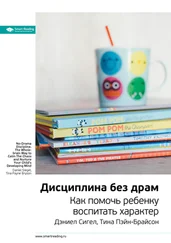Дэниел Сигел - Разум
Здесь есть возможность читать онлайн «Дэниел Сигел - Разум» весь текст электронной книги совершенно бесплатно (целиком полную версию без сокращений). В некоторых случаях можно слушать аудио, скачать через торрент в формате fb2 и присутствует краткое содержание. Город: Москва, Год выпуска: 2019, ISBN: 2019, Издательство: Манн, Иванов и Фербер, Жанр: Психология, на русском языке. Описание произведения, (предисловие) а так же отзывы посетителей доступны на портале библиотеки ЛибКат.
- Название:Разум
- Автор:
- Издательство:Манн, Иванов и Фербер
- Жанр:
- Год:2019
- Город:Москва
- ISBN:9785001172857
- Рейтинг книги:4 / 5. Голосов: 2
-
Избранное:Добавить в избранное
- Отзывы:
-
Ваша оценка:
- 80
- 1
- 2
- 3
- 4
- 5
Разум: краткое содержание, описание и аннотация
Предлагаем к чтению аннотацию, описание, краткое содержание или предисловие (зависит от того, что написал сам автор книги «Разум»). Если вы не нашли необходимую информацию о книге — напишите в комментариях, мы постараемся отыскать её.
Разум — читать онлайн бесплатно полную книгу (весь текст) целиком
Ниже представлен текст книги, разбитый по страницам. Система сохранения места последней прочитанной страницы, позволяет с удобством читать онлайн бесплатно книгу «Разум», без необходимости каждый раз заново искать на чём Вы остановились. Поставьте закладку, и сможете в любой момент перейти на страницу, на которой закончили чтение.
Интервал:
Закладка:
Kluckhohn, C. & Murray, H.A. (Eds.). (1948). Personality in nature, society, and culture. New York, NY: Alfred A. Knopf.
Kornfield, J. (2011). Bringing home the dharma: Awakening right where you are. Boston, MA: Shambhala Publications.
Kornfield, J. (2008). The wise heart: A guide to the universal teachings of Buddhist psychology. New York, NY: Bantam RandomHouse.
Krasner, M., Epstein, R., Beckman, H., Suchman, A., Chapman, B., Mooney, C., & Quill, T. (2009). Association of an educational program in mindful communication with burnout, empathy, and attitudes among primary care physicians. JAMA, September 23–30, 1284–1293.
Lakoff, G. & Johnson, M. (1999). Philosophy in the flesh: The embodied mind and its challenge to Western thought. New York, NY: Basic Books.
Langer, E. (1989/2014). Mindfulness. New York, NY: Da Capo.
Levit, G. S. (2000). The biosphere and the noosphere theories of V.I. Vernaksy and P. Teilhard de Chardin, a methodological essay. International Archives on the History of Science/Archives Internatinales D’Histoire des Sciences, 50(144), 160–176.
Lewis-Williams, D. (2002). The mind in the cave: Consciousness and the origins of art. London: Thames and Hudson.
Llinás, R. R. (2014). Intrinsic electrical properties of mammalian neurons and CNS function: A historical perspective. Frontiers in Cellular Neuroscience, 8, 320.
Lueke, A. & Gibson, B. (2014). Mindfulness meditation reduces implicit age and race bias: The role of reduced automaticity of responding. Social Psychological and Personality Science, 6: 284–291. doi: 10.1177/1948550614559651.
Maleeh, R. (2015). Minds, brains and programs: An information-theoretic approach. Mind and Matter 13(1), 71–103.
Mayer, E. A. (2011). Gut feelings: The emerging biology of gut-brain communication. Nature Reviews Neuroscience, 12, 453–466.
McGilchrist, I. (2009). The master and his emissary: The divided brain and the making of the western world. New Haven, CT: Yale University Press.
McGonigal, K. (2015). The upside of stress: Why stress is good for you. New York, NY: Penguin/RandomHouse.
McGregor, H.A., Lieberman, J.D., Greenberg, J., Solomon, S., Arndt, J., & Simon, L. et al. (1998). Terror management and aggression: Evidence that mortality salience motivates aggression against world-view-threatening others. Journal of Personality and Social Psychology, 74(3), 590–605.
Meaney, M.J. (2010). Epigenetics and the biological definition of gene x environment interaction. Child Development, 81(1), 41–79.
Mesquita, B., Barrett, L.F., & Smith, E.R. (Eds.) (2010). The mind in context. New York: The Guilford Press.Miles, L., Nind L., & Macrae C. N. (2010). Moving through time. Psychological Science. 21, 222–223.
Moloney, R. D., Desbonnet, L., Clarke, G., Dinan, T. G., & Cryan, J. F. (2014). The microbiome: stress, health and disease. Mammalian Genome, 25(1–2), 49–74.
Mountcasle, V. (1979). The columnar organization of the neocortex. Brain, 120, 701–722.
O’Donohue, J. (1997). Anam cara: A book of celtic wisdom. New York, NY: HarperCollins.
O’Donohue, J. (2008). To bless the space between us: A book of blessings. New York, NY: Doubleday Random House.
Palmer, P, & Zajonc, A. (2010). The heart of higher education: A call to renewal. San Francisco, CA: Jossey-Bass.
Pattakos, A. (2010). Prisoners of our thoughts: Victor Frankl’s principles for discovering meaning in life and work. (2nd ed.). San Francisco, CA: Berrett-Koehler Publishers.
Perlmutter, D. A. (2015). The brain maker: The power of gut-microbes to heal and protect your brain — for life. New York, NY: Little Brown.
Pinker, S. (1999). How the mind works. New York, NY: W. W. Norton & Company.
Porges, S. (2011). The polyvagal theory: Neurophysiological foundations of emotion, attachment, communication, and self-regulation. New York, NY: W. W. Norton & Company.
Prigogine, I. (1996). The end of certainty: Time, chaos, and the new laws of nature. New York, NY: The Free Press.
Rakel, D., Barrett, B., Zhang, Z., Hoeft, T., Chewning, B., Marchand, L., & Scheder, J. (2011). Perception of empathy in the therapeutic encounter: Effects on the common cold. Patient Education and Counseling, 85(3), 390–397.
Reader, J. (1999). Africa: A biography of the continent, New York, NY: Vintage Books.
Rosenblum, B. & Kuttner, F. (2011): Quantum enigma: Physics encounters conciousness. (2nd ed.). Oxford: Oxford University Press
Rupert, R.D. (2009). Cognitive systems and the extended mind. New York, NY: Oxford University Press.
Sato, W., & Aoki, S. (2006). Right hemispheric dominance in processing of unconscious negative emotion. Brain and Cognition, 62 (3), 261–266.
Schacter, D., Addis, D., & Buckner, R. (2007). Remembering the past to imagine the future: the prospective brain. Nature Reviews Neuroscience, 8(9), 657–661.
Scharmer, C. O. (2009). Theory u: Leading from the future as it emerges. San Francisco, CA: Berrett-Kohler Publishers.
Schore, A.N. (2012): The science and art of psychotherapy. New York, NY: W.W. Norton & Company.
Scott, D. (2004). Conscripts of modernity: The tragedy of colonial enlightenment. Durham, NC: Duke University Press.
Scott, D. (2014). Omens of adversity: Tragedy, time, memory, and justice. Durham, NC: Duke University Press.
Semendeferi, K., Lu, A. Schenker, N., & Damasio, H. (2002). Human and great apes share a large frontal cortex. Nature Neuroscience, 5, 272–276.
Senge, P. (1990). The fifth discipline: The art & practice of the learning organization. New York: Doubleday/Random House.
Shapiro, S., Astin, J., Bishop, S., & Cordova, M. (2005). Mindfulness-based stress reduction for health care professionals: Results from a randomized trial. International Journal of Stress Management. 12(2), 164–176.
Shapiro, S. & Carlson, L. (2013). The art and science of mindfulness: Integrating mindfulness into psychology and the healing professions. Washington, DC: American Psychological Association.
Shiota, M.N., Keltner, D., & Mossman, A. (2007). The nature of awe: Elicitors, appraisals, and effects on self-concept. Cognition and Emotion, 21(5), 944–963.
Siegel, A.W. (2015). Good Leg. Song with lyrics and music © Alex Siegel, 2015.
Siegel, D.J. (2006). An interpersonal neurobiology approach to psychotherapy: How awareness, mirror neurons and neural plasticity contribute to the development of well-being. Psychiatric Annals, 36(4), 248–258.
Siegel, D.J. (2007). The mindful brain: Reflection and attunement in the cultivation of well-being. New York, NY: W.W. Norton & Company.
Siegel, D.J. (2009): Mindful awareness, mindsight, and neural integration. Journal of Humanistic Psychology, 37(2), 137–158.
Siegel, D.J. (2010a): Mindsight: The new science of personal transformation. New York, NY: Bantam/Random House.
Siegel, D.J. (2010b). The mindful therapist: A clinician’s guide to mindsight and neural integration. New York, NY: W.W. Norton & Company.
Siegel, D.J. (2012a). The developing mind: How relationships and the brain interact to shape who we are. (2nd ed.). New York, NY: Guilford Press.
Siegel, D.J. (2012b). Pocket guide to interpersonal neurobiology: An integrative handbook of the mind. New York, NY: W.W. Norton & Company.
Siegel, D.J. (2014). Brainstorm: The power and purpose of the teenage brain. New York, NY: Tarcher/Penguin.
Siegel, D.J., & Bryson, T.P. (2012). The whole-brain child: 12 revolutionary strategies to nurture your child’s developing mind. New York, NY: Bantam/Random House.
Siegel, D.J., & Bryson, T.P. (2014). No-drama discipline: The whole-brain way to calm the chaos and nurture your child’s developing mind. New York, NY: Bantam/Random House.
Siegel, D.J., & Hartzell, M. (2003). Parenting from the inside out: How a deeper self-understanding can help you raise children who thrive. New York, NY: Tarcher/Penguin.
Читать дальшеИнтервал:
Закладка:
Похожие книги на «Разум»
Представляем Вашему вниманию похожие книги на «Разум» списком для выбора. Мы отобрали схожую по названию и смыслу литературу в надежде предоставить читателям больше вариантов отыскать новые, интересные, ещё непрочитанные произведения.
Обсуждение, отзывы о книге «Разум» и просто собственные мнения читателей. Оставьте ваши комментарии, напишите, что Вы думаете о произведении, его смысле или главных героях. Укажите что конкретно понравилось, а что нет, и почему Вы так считаете.

![Дэниел Гоулман - Измененные черты характера [Как медитация меняет ваш разум, мозг и тело]](/books/26978/deniel-goulman-izmenennye-cherty-haraktera-kak-med-thumb.webp)










